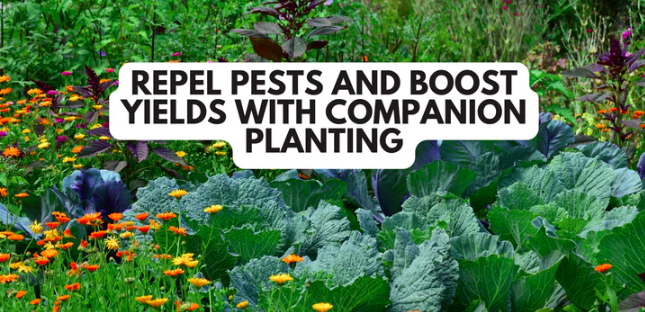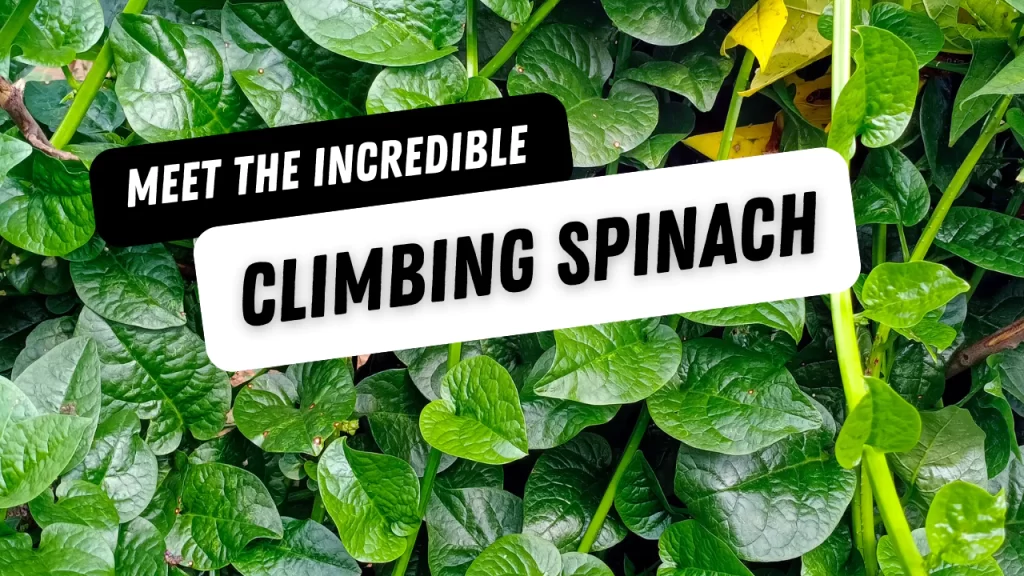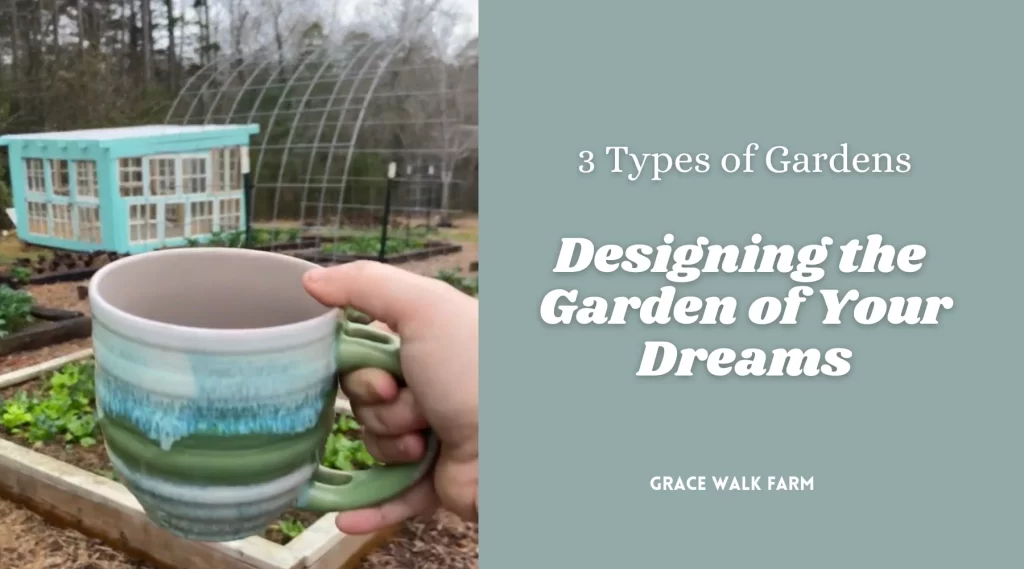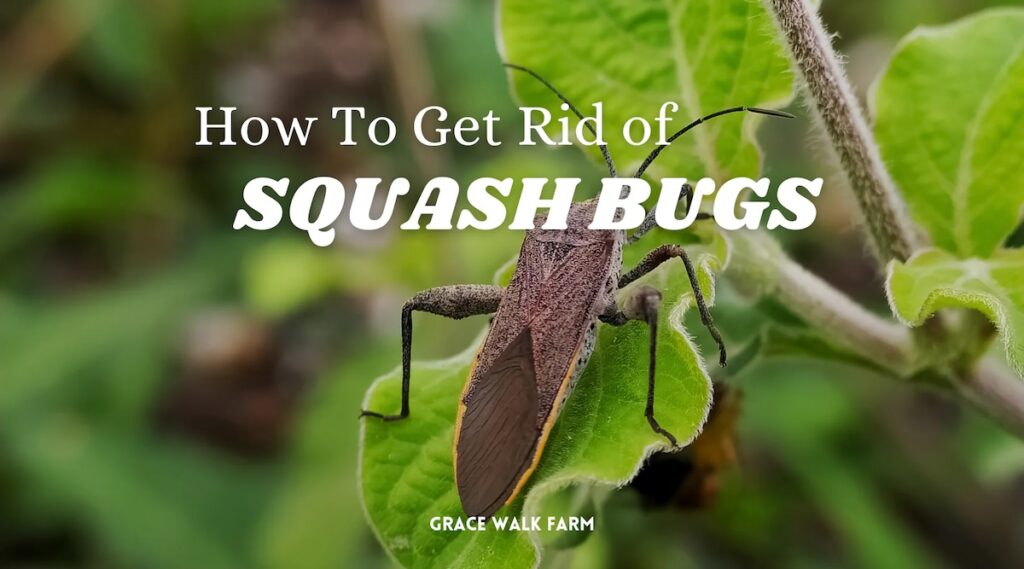Have you ever heard the phrase “the right plant in the right place”? Well, that’s the basic idea behind companion planting – growing certain plants together that mutually benefit each other. Companion planting is an age-old technique that not only saves space, but can also increase yields, repel pests, and promote overall garden health. If you’re looking to take your gardening game to the next level, read on to discover the secrets of successful companion planting!
Welcome to Grace Walk Farm, our family homestead in western NC. We share the highs and lows of our homestead journey, in hopes that it will encourage you to grow your own food too. Click here to grab our Beginner Garden Guide for free! Join our 600K strong Instagram community of homesteaders here. Thanks for stopping by!
What is Companion Planting?
Companion planting is a method of growing plants together that benefits both the plants and the gardener. Companion planting differs from crop rotation in that it does not involve moving your garden beds every year, but rather placing different types of crops next to each other for mutual benefit.
The benefits of companion planting include:
- Reduced pest problems
- Increased yields for certain crops (such as tomatoes)
Types of Companion Planting
- Intercropping is a type of companion planting where you plant crops together to maximize space and resources. For example, you could grow lettuce and tomatoes together in the same patch because they both need similar conditions (sunlight, water) but don’t compete for nutrients or space.
- Trap cropping is another type of companion planting that uses one crop to attract pests away from another crop. For example, marigolds are often planted around vegetable gardens because they attract aphids–and aphids love eating marigolds! This way your vegetable plants won’t get eaten up by these hungry insects.
- Polyculture refers to growing multiple types of plants together in the same area instead of just one species at a time like monoculture does (the opposite). This can help increase biodiversity which helps fight off diseases because there’s more genetic diversity among all those different plants sharing space together than there would be if each species had its own little plot by itself..
Benefits of Companion Planting
Here are some of the benefits of companion planting:
- Improved soil fertility. Companion plants can help improve the soil by adding nutrients to it, such as nitrogen-fixing legumes (beans) do. They also increase organic matter in the soil and improve its structure. This makes it easier for water to penetrate deeper into the ground and encourages earthworms, which aerate your garden beds while they’re at it!
- Pest control. Some plants attract beneficial insects that will feed on pests that might otherwise damage your crops; others repel certain pests by releasing smells they don’t like or even having thorns they can’t get through! For example, marigolds are known to be effective against nematodes (tiny worms), while dill attracts ladybugs–both of which eat aphids (small bugs).
How to Select Companion Plants
When choosing companion plants, consider the following:
- Plant characteristics. Some plants have characteristics that make them better suited to growing with other plants than others. For example, if you have a flower garden and want to attract bees and butterflies, choose flowers with bright colors that bloom throughout the growing season. If you’re planting fruit trees or berry bushes, look for varieties that are self-pollinating (they don’t need another plant of the same species nearby).
- Soil requirements. Companion plants can be selected based on their soil preferences as well–for example, if one type of vegetable needs lots of water but another does not, it’s best not to place them next to each other so they won’t compete for resources like water and nutrients from the soil.
- Water needs: Some plants require more moisture than others; therefore it’s important not only know what kind of climate zone you live in but also what type of soil type (sand? clay?) before deciding which plants will work best together at home!
What vegetables should you plant together?
There are many good companion planting pairings for the vegetable garden. Here are some examples:
- Tomatoes and Basil: Basil can repel pests that can damage tomato plants, while the tomato plant can provide shade for the basil.
- Carrots and Onions: Carrots and onions grow well together because they have different root depths, which can reduce competition for nutrients in the soil.
- Beans and Corn: Beans can fix nitrogen in the soil, which can benefit the corn plant. Additionally, the beans can use the corn as a trellis for support.
- Cucumbers and Radishes: Radishes can repel cucumber beetles, which can damage cucumber plants. Additionally, the radishes can help break up the soil and create more space for the cucumber roots to grow.
- Lettuce and Chives: Chives can repel aphids, which can damage lettuce plants. Additionally, the lettuce can provide shade for the chives.
- Peppers and Oregano: Oregano can repel pests that can damage pepper plants, while the pepper plant can provide some shade for the oregano.
- Squash and Nasturtiums: Nasturtiums can repel squash bugs, which can damage squash plants. Additionally, the squash plants can provide shade for the nasturtiums.
- Broccoli and Dill: Dill can attract beneficial insects that can help control pests that can damage broccoli plants. Additionally, the broccoli can provide some shade for the dill.
These are just a few examples of companion planting pairings for the vegetable garden. By experimenting with different combinations, you can find the pairings that work best for your garden and help maximize productivity and health.
Also check out these blogs:





